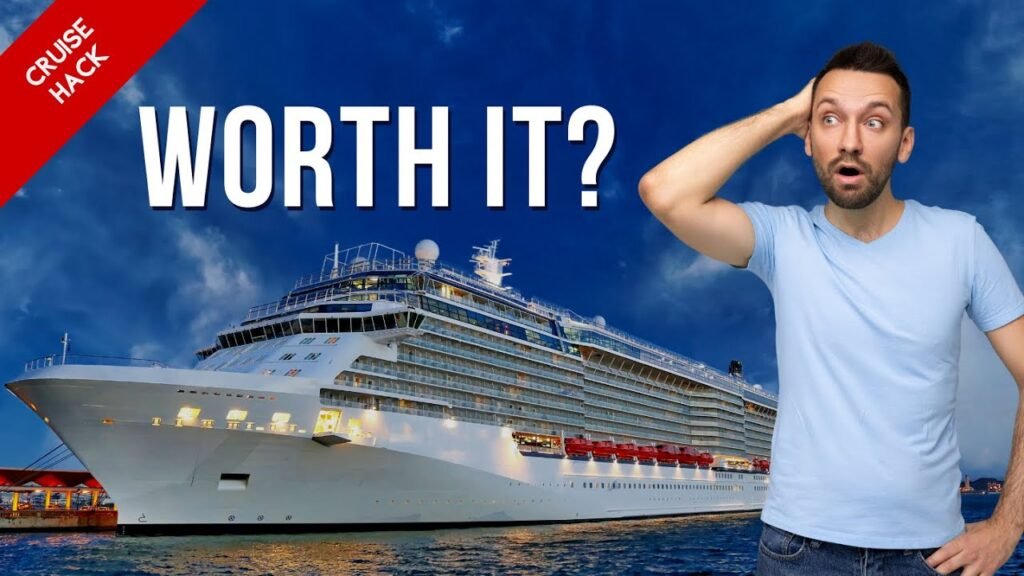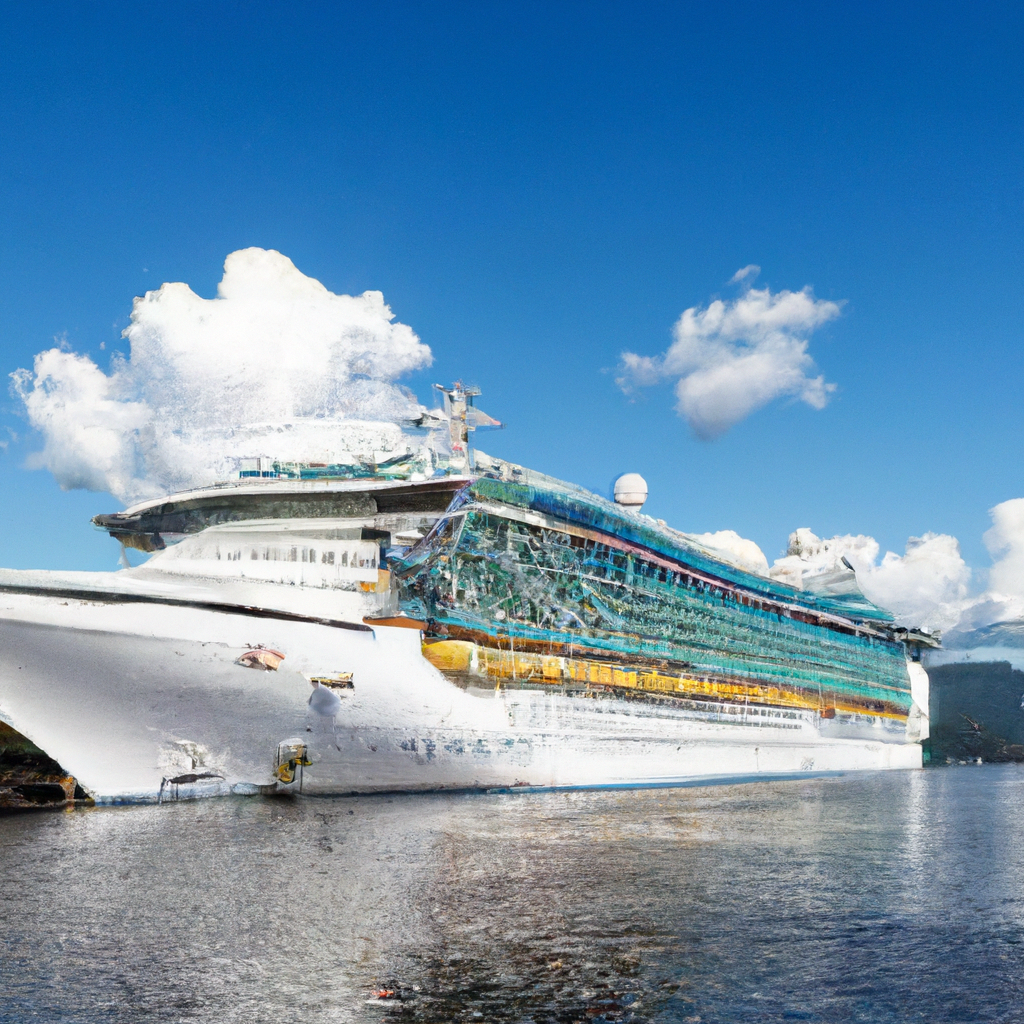Venturing into the high seas aboard a luxury cruise is often viewed as an experience in splendor, promising an array of world-class amenities that assure a memorable journey. Yet, with such idyllic promises come questions about affordability and value. Thus, in “Evaluating Luxury Cruises: The True Cost Behind the Price of Paradise”, you’re set to delve into the complexities surrounding the cost of cruising.
Your voyage within this article will navigate through the various factors that influence the cost of such sailing journeys – the cruise line, the destination, the cabin type, the time of year, and additional amenities. Exploring these intricacies will equip you with a clearer understanding of whether the luxurious allure of a cruise is indeed worth the associated expenses, ultimately enabling you to make more informed decisions for your future travel adventures.
Determining the Basic Costs of a Luxury Cruise
Speaking in general terms, the cost of a luxury cruise varies considerably. Factors such as the cruise line, destination, type of cabin, time of year, and additional amenities all significantly influence the total cost. On average, prices for a seven-day cruise can range from around $500 to several thousand dollars per person, definitely leaning towards the latter when it comes to luxury cruises.
Factors affecting the Total Cost
Your cruise’s total cost will depend on several factors. The destination and itinerary of your cruise will significantly affect the price, as will the length and season of your trip. The cruise line also hugely impacts the cost—luxury lines like Regent Seven Seas, Silversea, and Seabourn tend to price higher than mainstream lines like Carnival or Royal Caribbean. Lastly, the type of cabin and any additional amenities or services you opt for will also factor into your total.
Cost Difference among Various Cabin Types
Cabins range from small, interior rooms to expansive suites with private balconies, and the price difference between them can be substantial. Essentially, the larger and more luxurious the cabin, the higher the cost. Suites often come with added amenities such as priority boarding, private lounges, and butler services, which contribute to their higher prices.
Applicable Taxes, Port Charges, and Prepaid Gratuities
The price you initially see might not include certain expenses. These can include applicable taxes, port charges, and prepaid gratuities—all of which are added to your cruise fare. In essence, what you end up paying might be more than the published price. It’s crucial to consider these additional expenses when budgeting for your cruise.
Understanding the Price Spectrum of Cruises
The price range for cruises is broad, with affordable cruises on one end and luxury cruises on the other. Where a cruise sits on this price spectrum depends on several factors.
Differences from Affordable Cruises to Luxury Cruises
When comparing affordable cruises to luxury cruises, there are several key differences. The overall quality and size of the cabins, the inclusiveness of amenities, the staff-to-passenger ratio, and the quality of the dining and entertainment options generally increase as you move from standard to luxury.
Inclusions in Different Price Brackets
Lower-priced brackets typically include basic accommodations, meals, entertainment, and access to onboard facilities. As you move towards higher-priced brackets, more services become included. For example, luxury cruises usually include a greater variety of dining options, unlimited beverages, and access to high-end amenities like spas. They sometimes even cover costs such as gratuities or shore excursions, which can add up to substantial savings.
The value of the Premium for Luxury Cruises
Luxury cruises are often more expensive, but for many passengers, the premium paid is worth it for the enhanced experience. Premium amenities, more spacious accommodations, superior service, and all-inclusive options can provide real value that makes the extra cost worthwhile.

This image is property of i.ytimg.com.
Deciphering the Cost of Cruise Amenities
Added amenities and extras can cause the cost of your cruise to escalate, but they can also enhance your experience.
Inclusion and Exclusion of Amenities in Cruise Fares
Different cruise lines include different amenities in their fares. It’s essential to carefully consider each cruise package and what specifically is and isn’t included. Some cruises may offer all-inclusive packages, while others may charge for certain amenities and services.
Typical Cost of Extra Amenities
Cruise lines often charge extra for amenities like spa treatments, shore excursions, specialty dining, and premium alcoholic beverages. Costs for these extras can vary significantly based on what they are and which cruise line you’re sailing with.
Value Proposition of these Additional Costs
Though you’ll have to pay more, additional amenities can greatly enhance your luxury cruise experience. Whether it’s an unforgettable shore excursion, a relaxing massage at the onboard spa, or an exquisite meal at a specialty restaurant, these extras can create lasting memories.
Describing Luxury Cruise Features
Luxury cruises stand out from standard cruises due to their unique features and offerings.
Amenities, Suites, and Service Unique to Luxury Cruises
Luxury cruises often come with premium amenities, such as high-end spas and fitness centers, exceptional dining options, and entertainment of the highest caliber. The suites on luxury cruises are generally much larger than standard cruise cabins, often with balconies and even separate living areas. The level of service is also superior, with personal butler service and a high staff-to-guest ratio fairly common.
Exclusivity and Privacy Options in Luxury Cruises
Luxury cruses not only offer premium suites and top-tier amenities, but also a level of privacy and exclusivity that you won’t find on larger mainstream cruises. With fewer passengers and more personalized service, luxury cruises provide a private, intimate traveling experience.
Are these Features Worth the Extra Cost?
Deciding if these features are worth the extra cost largely depends on personal preferences. If privacy, exclusivity and access to high-end amenities and services are priorities for you, then the extra cost of a luxury cruise may well be justified.

This image is property of images.pexels.com.
Examining the Costs of Different Cruise Duration
The length of your cruise will significantly influence its cost. Longer itineraries will obviously cost more, but they often provide better value.
The Overall Cost Differences between Short cruises and Long Cruises
In general, longer cruises provide more value for your money. Though they cost more up front, the per-night cost is often less than shorter cruises. The reason? Cruise lines often provide more amenities and included extras on longer itineraries.
The Value Proposition in Longer Cruises
With longer cruises, you’ll have more time to enjoy the ship’s amenities and explore more destinations. Plus, the fact that the per-day cost is often less than shorter cruises means you’re getting more bang for your buck.
Additional Costs Incurred in Longer Cruises such as Prepaid Gratuities
Longer cruises also mean more days of gratuities, more opportunities for additional purchases, and potentially higher costs for things like airfare and pre- or post-cruise accommodations. It’s important to factor these additional costs into your budget.
Uncovering Hidden and Optional Costs
While the upfront cost of a cruise covers many aspects of your vacation, there are optional and hidden costs you’ll want to keep in mind.
Gratuities, Alcoholic Beverages, Spa Treatments, and Shore Excursions
Most cruise lines automatically add gratuities to your account, typically around $12-20 per person, per day. Alcoholic beverages, specialty dining, spa treatment, and shore excursions are typically not included and can add up quickly.
How these Costs can add up over the Course of the Cruise
While each individual cost may seem small, they can add up over the course of your cruise. That extra cocktail, dining at a specialty restaurant, or indulging in a massage can swell your final bill significantly.
Strategies to Manage these Optional Costs
It’s important to keep track of your spending and set a budget for optional expenses. Some cruise lines offer packages for things like drinks or spa treatments that can help manage these costs.

This image is property of images.pexels.com.
Investigating Pricing across Cruise Lines
Prices can vary widely among different cruise lines.
Price Comparisons among Leading Cruise Lines
Each cruise line prices their cruises differently depending on what they offer. Luxury cruise lines like Regent Seven Seas and Silversea tend to be more expensive, but their fares often include extras such as gratuities, drinks, and, sometimes, even shore excursions.
Quality of Service and Amenities across Different Cruise Lines
The quality of service and the amenities offered also vary between cruise lines. Luxury cruises tend to offer superior service and more and better-quality amenities.
Evaluating How Pricing Reflects in Quality across Cruise Lines
While luxury cruises do cost more, the increased price is typically reflective of the enhanced level of service and amenities offered. In other words, you get what you pay for.
Cost Implications of Time of Year
The time of year you choose to sail can affect the cost of your cruise.
Peak Season vs. Off-Peak Season Prices
Just like with most travel, cruising has peak and off-peak seasons. Peak season, which often includes school vacation periods and the summer months, generally sees higher prices.
Seasonal Demand for Certain Cruise Itineraries
Certain itineraries are in higher demand at specific times of the year, and this can drive prices up. For instance, Caribbean cruises are more expensive during winter, when people are seeking to escape the cold.
Ways to Save by Choosing the Right Time to Cruise
Sailing in the off-peak season, often the fall and spring, can reap significant savings. There may also be fewer crowds onboard and at your ports of call, which can make your cruise feel more luxurious.

This image is property of images.pexels.com.
Addressing Cost Concerns with Travel Insurance
Considering travel insurance is an important part of planning a cruise, especially a luxury one.
Reasons for Considering Travel Insurance
Travel insurance can protect you from financial loss in case of unforeseen circumstances, such as medical emergencies, trip cancellations, or lost baggage. When you’re investing a significant amount of money in a luxury cruise, having this protection can give you peace of mind.
How Much Travel Insurance for a Cruise Might Cost?
The cost of travel insurance varies widely, depending on the cost of your trip, your age, and the amount of coverage you want. It’s typically a small percentage of the total trip cost, but it can be a wise investment.
Coverage of Travel Insurance for Various Aspects of the Cruise
Most travel insurance policies cover trip cancellation or interruption, medical expenses, evacuation, and lost, stolen, or damaged items. Some policies also cover other parts of your trip, such as flights and pre- or post-cruise hotel stays.
Conclusion: The True Cost Behind the Price of Paradise
Luxury cruises offer an unsurpassed level of comfort and service, but they also come with a higher price tag.
Cost Considerations for Potential Luxury Cruisers
If you’re considering a luxury cruise, it’s crucial to understand what’s included in your fare, what additional costs you may encounter, and how to get the most value for your money.
Final Takeaways for Evaluating the Worth of a Luxury Cruise
While luxury cruises are undeniably more expensive than their mainstream counterparts, they also offer an incredibly enhanced experience, packed with superior service, high-end amenities, and less crowded ships.
The Ultimate Decision: Is the Price of Paradise Worth It?
Deciding whether a luxury cruise is worth the extra cost is a personal decision that depends on what you value. If impeccable service, spacious accommodations, and a wealth of high-quality amenities and dining options are your priority, the cost could very well be worth it. Ultimately, finding the perfect balance between comfort, amenities, and cost is key to crafting your dream cruise experience.


